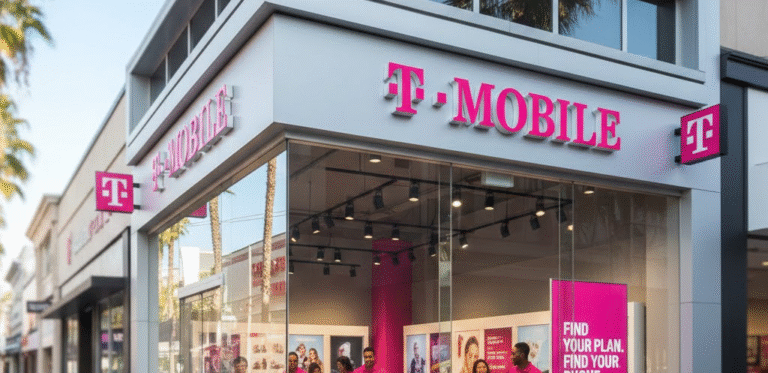
Relocating a business is more than just a logistical challenge; it significantly impacts both your employees and clients. A key step for a successful business relocation is ensuring everyone is aware of the procedure and feels at ease with it. The key to success lies in how you communicate your business move. This article will guide you through strategies to keep your team and customers informed, maintaining trust and confidence.
The Impact of the Move
Before starting the communication process, it’s important to thoroughly understand how the move will impact both employees and clients. Employees might worry about changes in their commute, adjustments in the work environment, or even concerns about job security. Conversely, customers might worry about service interruptions or delays that might have an impact on their company’s operations. Early detection of these issues allows you to proactively address them, which improves the relevance, reassurance, and efficacy of your communication in preserving confidence and trust during the change.
Develop a Comprehensive Communication Plan
To effectively communicate your business move, you need a well-thought-out communication plan. This plan should outline key messages, the communication timeline, and the channels you’ll use. Start by identifying the most critical points, such as the reasons for the move, benefits, and potential challenges. What business owners need to know the details about the new location, the move timeline, and how operations will continue during the transition. Having a clear plan ensures your communication is consistent, coherent, and aligned with your business goals.
Communicate Early and Often
When communicating during a business transfer, timing is everything. Begin the process as soon as you can to allow time for everyone to become used to it. Employees and clients can better handle any worries and mentally prepare for changes when there is early communication. To ensure that everyone is informed at every stage of the process, regular updates are vital. Updates on important dates, modifications to the schedule, and how the transfer will impact day-to-day operations should all be included. You may lessen ambiguity and avoid miscommunication by talking often. Maintaining open lines of communication makes sure that everyone feels heard and included.
Provide Support and Resources
Moving can be stressful, so it’s important to provide support and resources to help everyone adjust. For employees, start by offering information on new commuting options, flexible working arrangements, and organizing orientation sessions at the new location. You can also arrange workshops or one-on-one meetings to address any specific concerns they may have. When it comes to the logistics of the move itself, commercial movers are the solution, as they can streamline the entire process and handle all the details professionally. For clients, consider creating a dedicated support line or an FAQ section to answer their questions and provide reassurance. You may help retain good ties during the transfer by being proactive and easing the transition for both clients and staff.
Tailor Your Communication for Different Audiences
Employees and clients have different concerns, so it’s important to tailor your communication accordingly. For employees, focus on how the move will impact their roles, work environment, and routines. Consider holding meetings or Q&A sessions where employees can ask questions and receive immediate answers. For clients, emphasize how you will continue to meet their needs and ensure continuity of service. Reassure them that their experience with your business will remain consistent despite the move. By customizing your message, you can address specific concerns and ensure that the information is relevant.
Use Multiple Channels of Communication
In today’s digital age, relying on just one method of communication is not enough. Use a variety of channels to ensure your message reaches everyone. Emails, in-person meetings, newsletters, social media updates, and video messages can all be effective ways to communicate your business move. Consider creating a dedicated section on your website or an internal portal where employees and clients can find all relevant information. To guarantee that your message is comprehended and to accommodate a variety of tastes, diversity your communication channels.
Be Transparent and Honest
Transparency is key to building and maintaining trust during a business move. Be open about the reasons for the move, the challenges you might face, and the steps you’re taking to address them. Stepping out of your comfort zone and communicating potential disruptions or delays upfront is crucial for maintaining credibility. Being truthful with your staff and clients can help you build their trust and loyalty. Transparency helps manage expectations and makes stakeholders feel like they are part of the process.
Monitor Feedback and Adjust Accordingly
Communication is a two-way street; it’s essential to encourage feedback from both employees and clients. By listening to their concerns and suggestions, you can adjust your communication strategy to better meet their needs. This feedback loop helps you stay connected and ensures your communication remains relevant. It also demonstrates that you value their input, which can strengthen relationships and enhance their experience during the move. Consider regular surveys or feedback forms to gauge how well your communication strategy is working. Use this feedback to make necessary adjustments, improving communication and showing commitment to a smooth transition.
Some Tips for a Smooth Business Move
When planning a business relocation, it’s the goal is to prioritize measures that minimize disturbance while maintaining productivity. Making a thorough schedule that covers every stage of the relocation, from packing to setting up at the new place, is one of the first things to do. The procedure may be made much more efficient by working with a reputable moving company like Spyder Moving, who is well-known for their proficiency in business relocation services. They can take care of everything, from moving bulky office furniture to packing fragile equipment, to make your move go well.
Further, make an inventory list and properly label every box to ensure that nothing is lost during the relocation. Assigning a moving coordinator who can supervise the procedure and serve as the point of contact for any queries or problems that may come up is also beneficial. Your business relocation might be finished with the least amount of stress and greatest efficiency by using these pointers and collaborating with knowledgeable specialists.
Conclusion
Maintaining trust with your clients and staff while facilitating a seamless transition are two key goals when you communicate your business move effectively. You can handle this transition with confidence if you comprehend the effects of the relocation, create a thorough communication plan, and maintain transparency. The secret to success is persistent and clear communication. Your business transfer will be as smooth as possible if you keep everyone updated, take proactive measures to resolve concerns, and provide the required support. This will make the process enjoyable for everyone involved.


